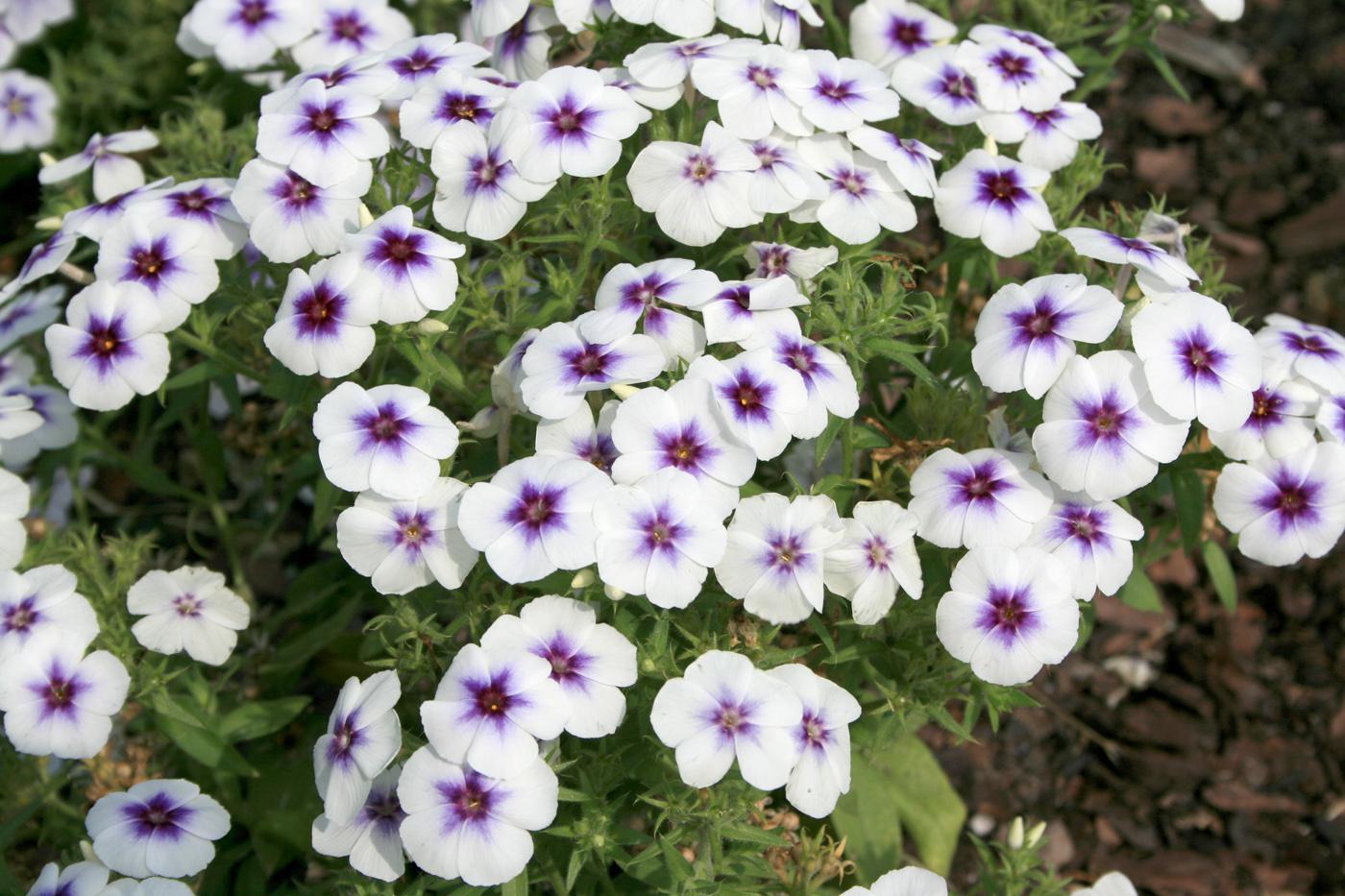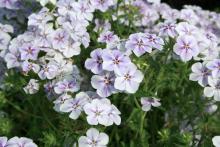Information Possibly Outdated
The information presented on this page was originally released on June 24, 2010. It may not be outdated, but please search our site for more current information. If you plan to quote or reference this information in a publication, please check with the Extension specialist or author before proceeding.
Garden phlox gives excellent flower show
Many gardeners wouldn’t dare plant a bed without having at least one variety of phlox present.
Gardeners enjoy several spring-flowering phlox such as woodland phlox and creeping phlox. But I am referring to garden phlox, Phlox paniculata, which is a special plant to have in the garden.
The flower display of garden phlox is spectacular, and the showy panicles can have up to 50 individual flowers each. Colors range from soft pastels to surprisingly brilliant hues in pink, purple, lavender, red and white. Bi-colors have an eye in the center.
In 2002, the Perennial Plant Association named Phlox paniculata David the 2002 Perennial Plant of the Year. This plant produces pure white flowers and is powdery mildew-resistant.
One of the newest garden phlox varieties is the 21st Century series in beautiful blue and lavender. These easy-to-grow plants have vigorous, lateral branching that results in full, mounded plants. Strong flower production lasts from spring until frost. These garden phlox tolerate summer heat very well when planted in the cooler temperatures of early spring.
Garden phlox can reach up to 3 feet tall and make a brilliant background late in the summer season. Keep this in mind when choosing smaller plants at your favorite garden center.
Garden phlox should be planted in well-drained, amended soil. The plant prefers a sunny location. In coastal areas, provide partial shade to prolong the bloom period, but partial shade may reduce the flowering intensity.
Use a good garden fertilizer such as an organic 4-3-4 at planting. Re-apply each subsequent spring before active growth. Add a 2- to 3-inch layer of mulch to conserve moisture and help cool the soil.
Early each spring, thin emerging stems to keep just the four or five strongest to ensure the best flowering. If you allow your garden phlox to re-seed, most flowers will revert to a pale lavender or magenta. Deadhead spent flowers throughout the summer to prevent this from happening. Many new selections are sterile, but deadhead anyway to keep the plants looking fresh.
Divide your garden phlox every two to three years to rejuvenate the plant. Each division should have three or four growing points with attached roots. Plant the extras in new spots or make friends with your neighbors.
Powdery mildew can be a problem with some cultivars, but this problem varies somewhat year to year. Space plants to ensure adequate air movement, and water in the mornings with the hose directed toward the base of the plants. Consider planting some mildew-resistant selections. There are also fungicides on the market that can help prevent this disease.
Home gardeners have literally hundreds of selections of garden phlox to choose from, so check with your local garden center to see which selections are in your area. Many are also available online as bare-root plants in the spring. Try some garden phlox in your garden this summer.









